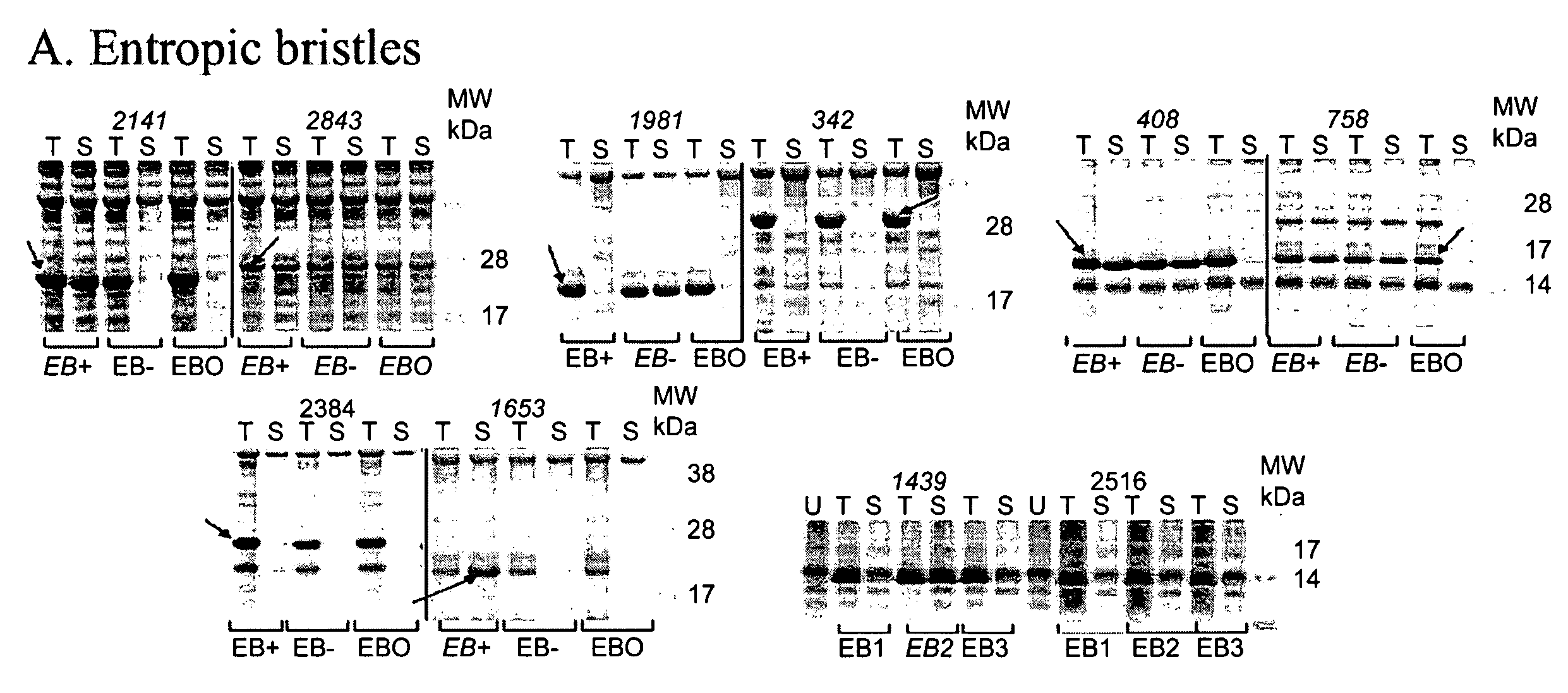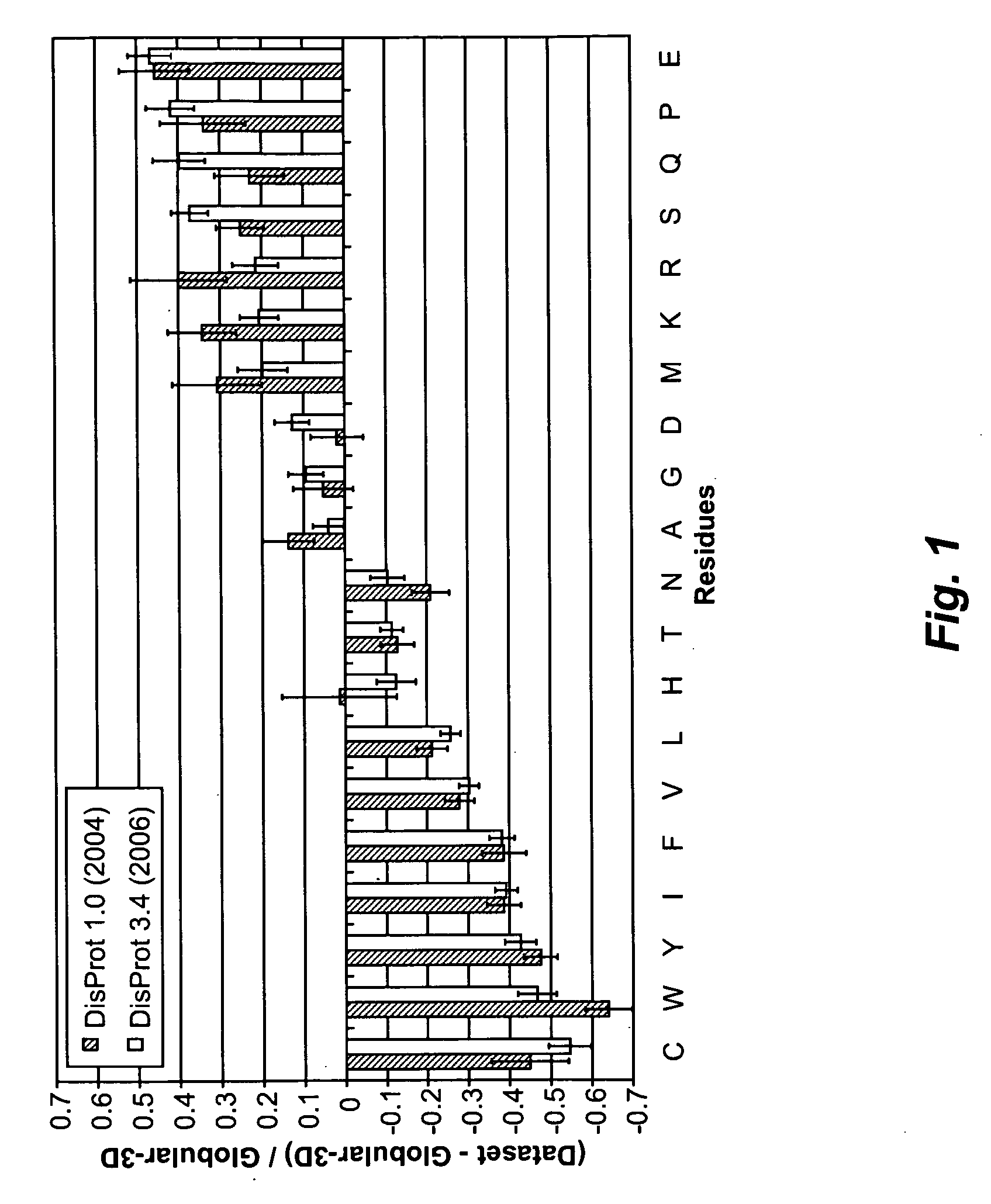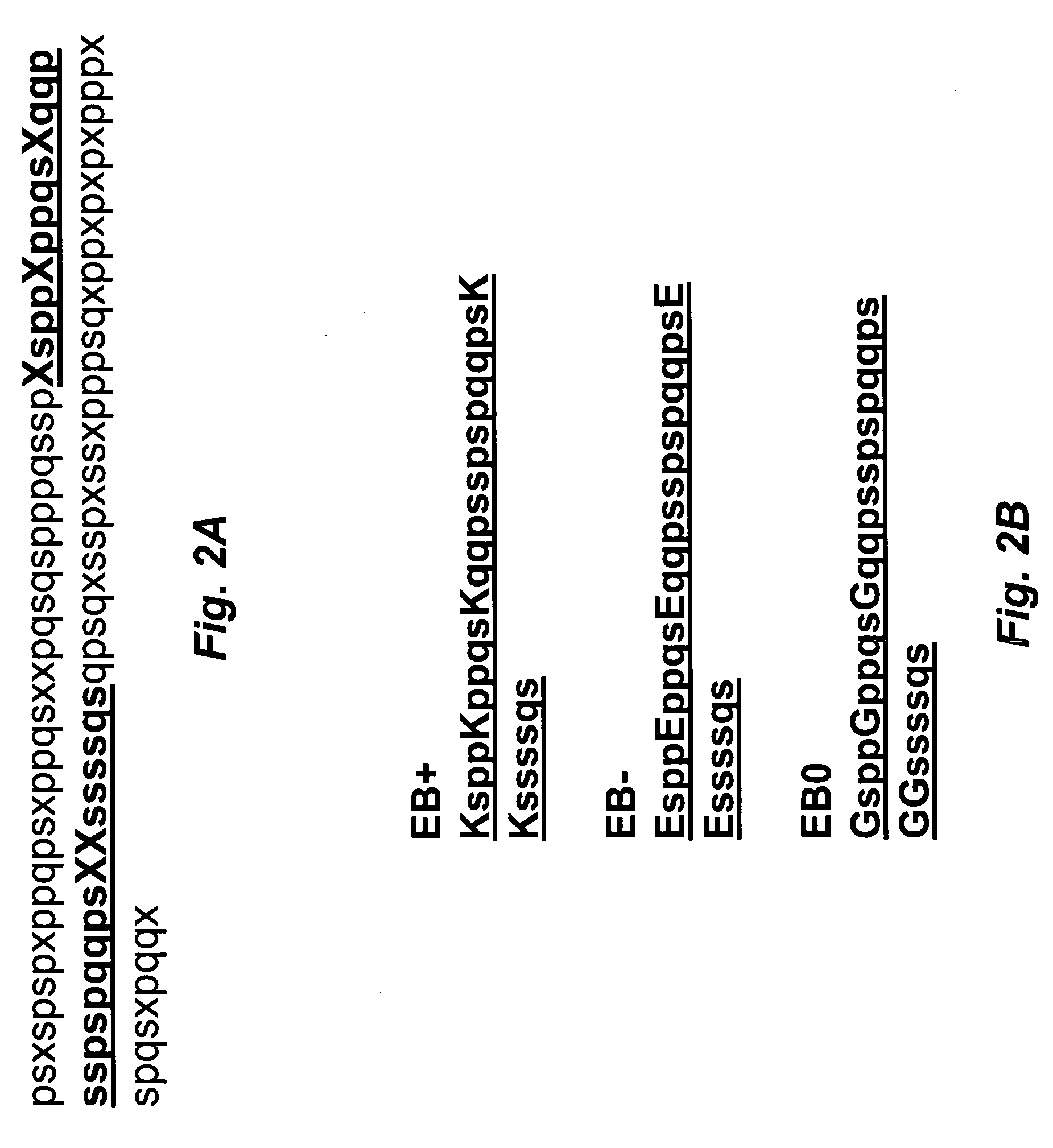Artificial entropic bristle domain sequences and their use in recombinant protein production
a bristle domain and artificial entropic technology, applied in the field of improved recombinant protein production, can solve the problems of increasing the difficulty of recombinant protein expression and purification using standard methods, reducing the success level of cloned and crystallized proteins, and reducing the amount of aggregation. , the effect of improving the folding ra
- Summary
- Abstract
- Description
- Claims
- Application Information
AI Technical Summary
Benefits of technology
Problems solved by technology
Method used
Image
Examples
example 1
Artificial EBDs Effectively Solubilize Insoluble Proteins
[0170]To address host cell toxicity problems associated with the use of certain naturally-occurring EBD sequences in fusion with heterologous proteins, artificial sequences were designed. Our knowledge of the intrinsic protein disorder phenomenon allowed us to design highly disordered artificial EBD sequences with desirable charge properties. Further, the likelihood that a completely artificial sequence would possess cytotoxicity due to the specific interaction with cellular components seemed to be minimal.
Designing the Artificial Entropic Bristles
[0171]In order to serve as an artificial EBD, a polypeptide chain should be highly flexible and disordered. Statistical comparisons of amino acid compositions indicated that disordered and ordered regions in proteins are different to a significant degree. Based on the analysis of intrinsically disordered (ID) proteins and disordered regions within proteins, amino acid residues were c...
PUM
| Property | Measurement | Unit |
|---|---|---|
| Fraction | aaaaa | aaaaa |
| Fraction | aaaaa | aaaaa |
| Length | aaaaa | aaaaa |
Abstract
Description
Claims
Application Information
 Login to View More
Login to View More - R&D
- Intellectual Property
- Life Sciences
- Materials
- Tech Scout
- Unparalleled Data Quality
- Higher Quality Content
- 60% Fewer Hallucinations
Browse by: Latest US Patents, China's latest patents, Technical Efficacy Thesaurus, Application Domain, Technology Topic, Popular Technical Reports.
© 2025 PatSnap. All rights reserved.Legal|Privacy policy|Modern Slavery Act Transparency Statement|Sitemap|About US| Contact US: help@patsnap.com



